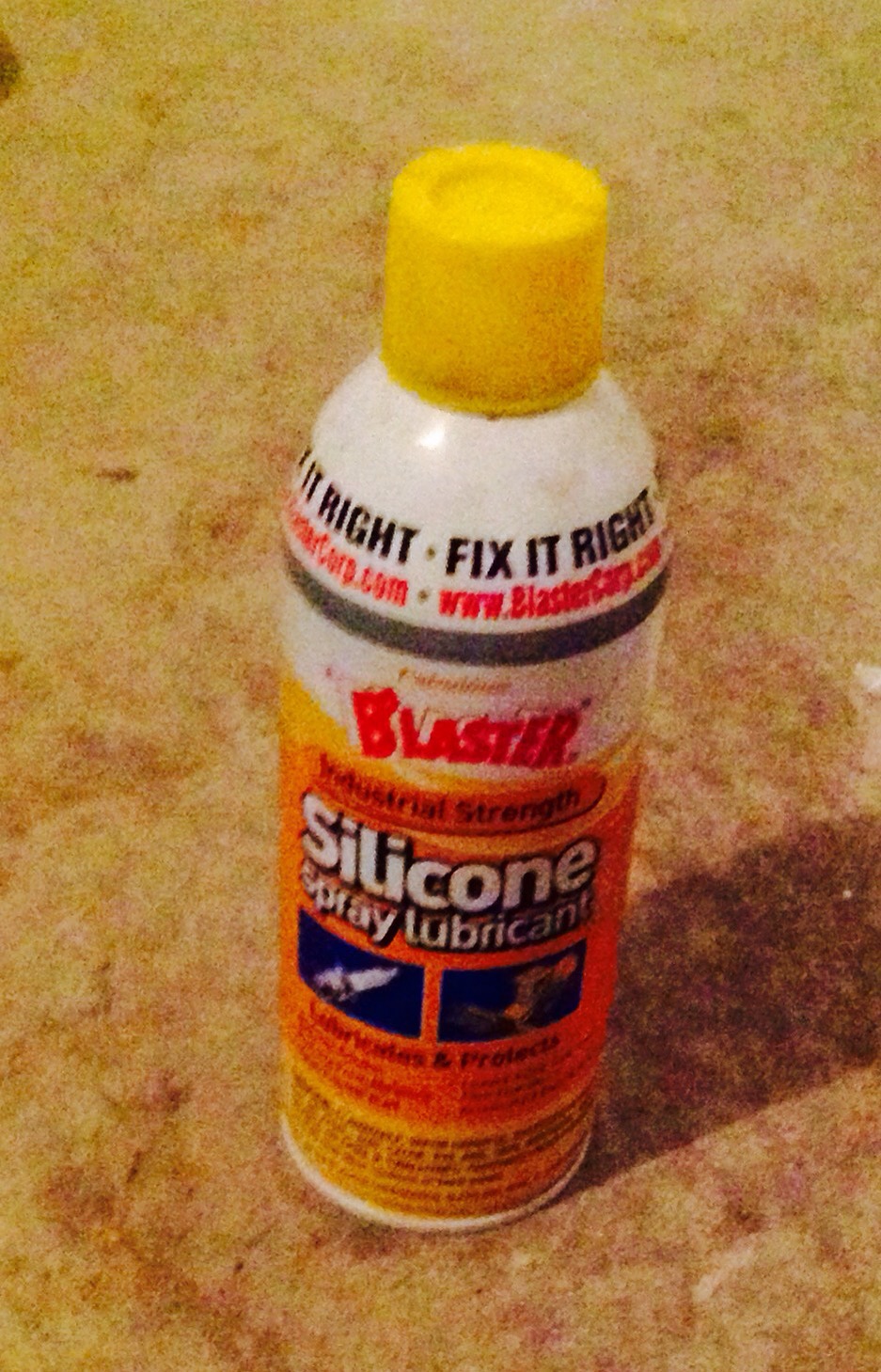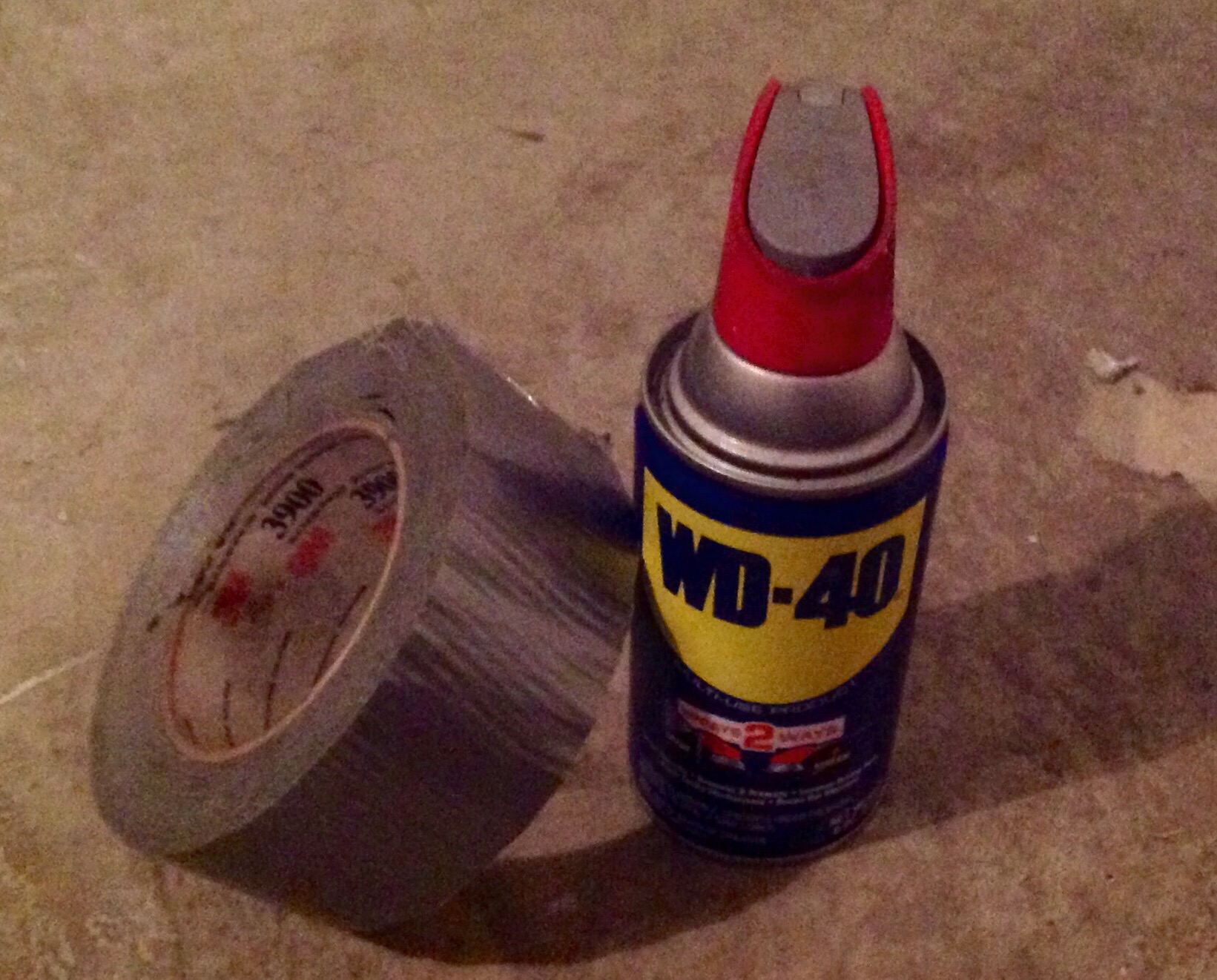WD40 And Duct Tape: You’re Using Them Wrong
If it moves and it shouldn’t, use duct tape.
If it doesn’t move and it should, use WD40.
Not only is this “conventional wisdom” wrong, it is spectacularly wrong, both in home repairs and computers.
First, let’s establish the fact that it’s ducT tape, not ducK tape. It is useless for taping ducks, and I’m not even sure why you would want to attempt that. But, duct tape is a staple of every home workshop. And I admit, I have a roll sitting on a shelf in my garage. Duct tape is designed to tape ductwork.
The metal work that connects your furnace and air conditioner to the vents around your house is called ductwork. And, according to popular Hollywood movies it is the easiest way to break into even the most secure facility. Typically it is made from sheet-metal that has been cut and bent into a square or round shape and runs from the furnace to every room in your house.
The duct-work has to be built in sections. Where these sections connect to each other there is the possibility of air escaping. Escaping air means escaping heat and cooling. To prevent that, technicians will put tape over the seams. That’s literally what duct-tape was developed for; to tape the seams on duct work so that air doesn’t escape.
BTW, it’s terrible for that. They tested it at Berkeley.
“We tried as many different kinds of duct sealants as we could get our hands on. Of all the things we tested, only duct tape failed. It failed reliably and often quite catastrophically,” Max Sherman, head of the Energy Performance of Buildings Group in Berkeley Lab’s Environmental Energy Technologies Division (EETD)
But, we aren’t using duct tape to patch our ductwork. We are using it to tape boxes shut. It kind of sucks at that too. Use clear packing tape. We are using it to cure warts. Nope, doesn’t do that well either. Use liquid nitrogren. In fact, the thing duct tape adheres to the best is other duct tape. So, if you’re using it to tape a box, make sure you go all the way around the box and reattach the tape to itself. (Or use packing tape.)
Yesterday, July 8th, was not a good day for technology. United Airlines had to cancel all their flights for a couple of hours while they sorted out a software “glitch.” The Wall Street Journal’s web page (www.wsj.com) went down. And probably most troubling of all, the New York Stock Exchange had to halt trading because the computers fouled up.
Zeynap Tufekci wrote an article that brilliantly ties the software failures to “virtual duct tape.” The idea that instead of fixing our software problems properly, we are simply applying some digital duct tape to keep them running. And, just like duct tape is going to fall off your ductwork, and your cardboard boxes, and your fingers (without removing your warts), the digitial duct tape is going to fail. Yesterday was simply a taste of things to come.
But, in the choice between misusing duct tape and misusing WD40, it’s the “lubricant” that is the more dangerous, both in computers and in home repairs.
There are two approaches to computer security. It used to be that we opened up a system and only locked down the portions we didn’t want anyone to access. Today, we take the opposite approach. We lock down everything and only allow access on an as needed basis. This approach leads to a lot of “false positives,” where people who need access can’t get it.
That’s frustrating. As IT guys, we understand that. And believe me, want to help you do your job. We don’t like being the bottleneck. However, we need to avoid using WD40 on the problem. In other words, we can’t simply say, “Well, let’s just remove the restriction and hope that people do the right thing.” It won’t happen. For example, if you connected an unprotected, unpatched computer to the internet, you will become infected in the amount of time it would take to download your security patches.
The security guys are there to keep your data and your computers safe. If we applied digital WD40 and simply opened the firewall ports and removed the security restrictions, you would be able to quickly get to whatever systems you wanted. The downside is that you would instantly become infected.
But, what about home repairs? WD40 is okay for them, right?
No. And misusing it at home is just as dangerous as misusing it in your IT systems. WD40 is not a lubricant, despite what the can says. It is a degreaser and water displacer. In fact, the “WD” stands for Water Displacement. So, if you needed to dry out a piece of electrical equipment, you could spray it with WD40 and it would completely push out or displace the water. And, if your hands are covered with grease, spray a little WD40 on your hands and the grease will come right off.
But, WD40 also evaporates. If you have a sticky hinge, and it’s stuck because it got a bunch of gunk, dust and dirt in it, when you hit it with WD40, the grease and the dirt will be displaced, but it has nowhere to go. Once the WD40 evaporates, the gunk is still there and your hinge is going to be worse than ever.
I have a friend who repairs classic pinball machines. As you can imagine, there are lots of moving parts. The inside of a pinball machine is also a fairly dirty, dusty environment. I asked him about WD40 and pinball repair.
The people who repair their machines with WD40 are making it worse. The machine is going to run for a little while, but in a few months, it’s going to seize up and they are going to have to clean and repair it all over again.
So, what do you use instead?
Any good silicone based lubricant will work. It will both lubricate the parts and seal out any dust. And it doesn’t evaporate.

So, conventional wisdom isn’t always right. And if you think about it, silicone is the same stuff that makes sand. Who’d have thought that sand made a better lubricant than WD40?
Rodney M Bliss is an author, columnist and IT Consultant. His blog updates every weekday at 7:00 AM Mountain Time. He lives in Pleasant Grove, UT with his lovely wife, thirteen children and grandchildren.
Follow him on
Twitter (@rodneymbliss)
Facebook (www.facebook.com/rbliss)
LinkedIn (www.LinkedIn.com/in/rbliss)
or email him at rbliss at msn dot com(c) 2015 Rodney M Bliss, all rights reserved

